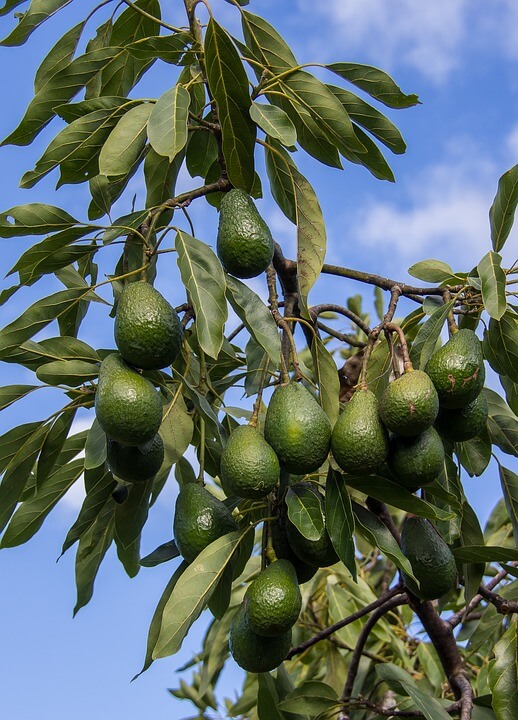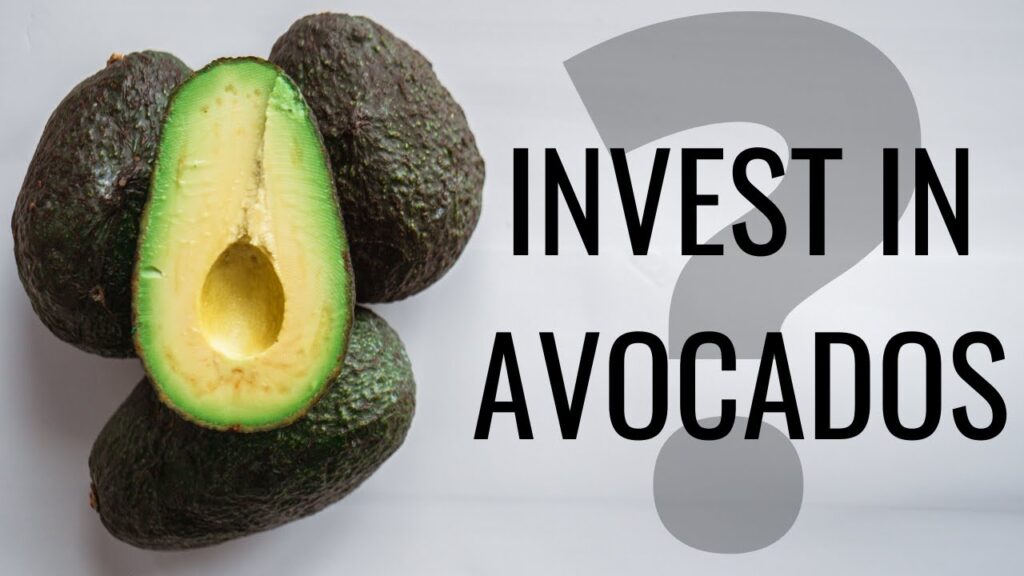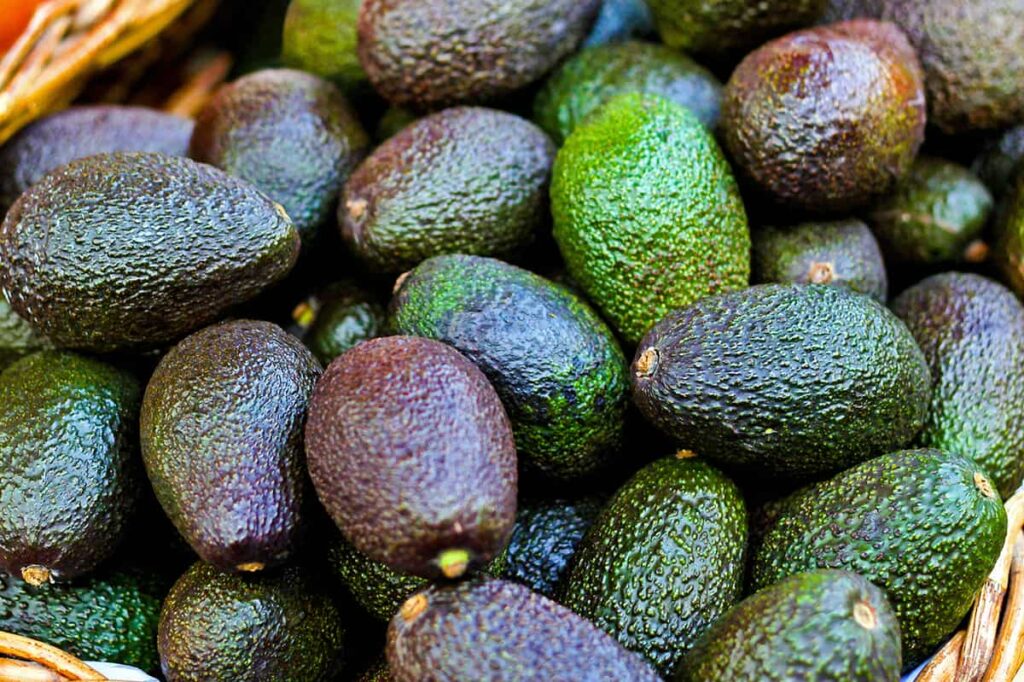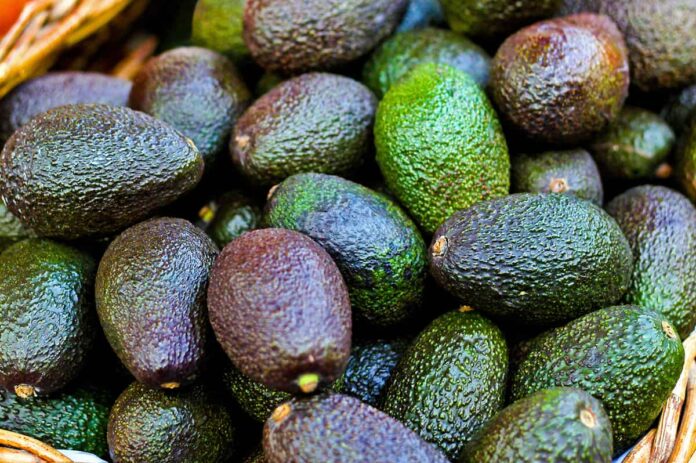Avocados have taken the world by storm, popularly known for their delicious taste and health benefits. But did you know that avocados can also be a great investment opportunity? In this beginner’s guide to investing in avocados, you will discover everything you need to know to get started in this unique market. From understanding the factors that affect avocado prices to tips on finding the best sources and timing your investments, this article will equip you with the knowledge to make informed decisions and potentially reap the rewards of investing in this green gold. So, grab your toast and get ready to explore the exciting world of avocado investing!

Understanding Avocado Market
Avocados have become one of the most popular fruits in recent years, with their demand and consumption skyrocketing. Understanding the avocado market is essential for anyone considering investing in this lucrative industry. By analyzing avocado market trends and the factors affecting avocado prices, you can make informed investment decisions.
Avocado Demand and Consumption
The demand for avocados has been steadily rising, driven by their versatility, health benefits, and unique taste. Avocados are no longer limited to being just a topping for toast; they are now used in a wide variety of dishes, from guacamole to salads, smoothies, and even desserts. This increasing demand has led to a surge in avocado consumption, making it a fruitful industry to invest in.
Avocado Market Trends
Keeping up with the latest avocado market trends is crucial for investors. Some noteworthy trends include the rise of avocado-based products, such as avocado oil and avocado ice cream, which are gaining popularity among health-conscious consumers. Additionally, the growing interest in sustainable agriculture and organic farming practices has led to a surge in the demand for organic avocados.
Factors Affecting Avocado Prices
Several factors can influence avocado prices, and understanding them is vital for successful investment. One significant factor is the supply and demand dynamics. If the supply of avocados is limited while the demand continues to rise, prices are likely to increase. Additionally, weather conditions, such as drought or frost, can significantly impact avocado production, leading to fluctuations in prices. Other factors include transportation costs, trade policies, and currency exchange rates.
Benefits of Investing in Avocados
Investing in avocados offers numerous benefits, making it an attractive option for investors seeking to diversify their portfolio. The following advantages highlight why avocados are a smart investment choice.
Growing Popularity of Avocados
Avocados have gained immense popularity worldwide, becoming a staple ingredient in many cuisines. Their versatility and unique flavor profile have made them a favorite among consumers of all ages. As the demand for avocados continues to rise, investing in this market allows you to tap into a growing customer base and potentially high returns.
High Nutritional Value
Avocados are not only delicious but also packed with essential nutrients. They are an excellent source of healthy fats, fiber, vitamins, and minerals. With the growing focus on health and wellness, avocados have become a sought-after ingredient in the quest for nutritious and wholesome foods. Investing in avocados allows you to align your investments with the global trend towards healthier eating habits.
Potential for Profit
The avocado market offers a promising potential for profit. With increasing demand and limited supply, avocado prices have shown a steady upward trend in recent years. As an investor, you have the opportunity to benefit from this price appreciation. Whether you choose to invest in avocado farms, cultivation companies, or through avocado futures and ETFs, careful research and strategic decision-making can yield significant profits.
Diversification in Portfolio
One of the key principles of investment is diversification, and avocados offer an excellent opportunity to diversify your portfolio. By investing in avocados, you can add a unique asset class to your investment mix, reducing the overall risk of your portfolio. Diversification across different industries and markets can provide stability during times of market volatility, making avocado investments a valuable addition to your investment strategy.

Different Ways to Invest in Avocados
Investing in avocados can be done through various channels. Here are some different ways you can participate in the avocado market and capitalize on its growing success.
Buying Individual Avocado Farms
Investing in individual avocado farms offers a direct ownership stake in the production of avocados. This approach allows you to have control over the cultivation process and potentially higher returns. However, it requires significant capital and expertise in agricultural practices, making it more suitable for experienced investors or those willing to partner with agricultural professionals.
Investing in Avocado Cultivation Companies
Another option is to invest in companies involved in avocado cultivation. By investing in these companies, you can benefit from the expertise and resources of established players in the industry. This approach grants you exposure to the avocado market without the need for direct involvement in farming operations. Before investing, thorough research into each company’s financials, management team, and market positioning is essential.
Avocado Futures
For investors seeking a more speculative approach, avocado futures can be an option. Futures contracts allow investors to speculate on the future price of avocados without owning the physical fruit. However, this type of investment carries higher risks, as the price of avocados can be volatile. It is crucial to have a deep understanding of market dynamics and access to reliable market information when trading in avocado futures.
Avocado ETFs
Exchange-Traded Funds (ETFs) provide a diversified investment approach that allows you to invest in a basket of avocado-related stocks. Avocado ETFs offer exposure to the avocado market without the need to select individual companies. These funds track the performance of an index or a specific sector, providing investors with a convenient and cost-effective way to gain exposure to the avocado industry.
Researching Avocado Markets
Thorough research is vital before investing in the avocado market. By understanding supply and demand dynamics, analyzing avocado price history, identifying market trends, and monitoring government policies and regulations, you can make well-informed investment decisions.
Understanding Supply and Demand
Understanding the supply and demand dynamics of avocados is crucial for predicting future price movements. Study the production patterns of major avocado-producing regions, as well as the consumption trends in target markets. By assessing factors that may affect supply, such as climate conditions and disease outbreaks, and identifying emerging consumer trends, you can gain insights into the potential risks and opportunities in the avocado market.
Analyzing Avocado Price History
Analyzing avocado price history can reveal valuable information about price trends and patterns. Look for historical price data over different timeframes and identify any recurring patterns or seasonality in avocado prices. This analysis can help you understand the factors that influence price fluctuations and make more informed predictions about future prices.
Identifying Market Trends
Keep a close eye on emerging market trends in the avocado industry. These trends can include changes in consumer preferences, new product developments, or shifts in marketing strategies. For example, the growing demand for organic avocados or the rise of avocado-based beauty products. By identifying and staying ahead of these trends, you can position yourself strategically in the avocado market.
Monitoring Government Policies and Regulations
Government policies and regulations can significantly impact the avocado market. Keep track of any changes in trade agreements, import/export policies, tariffs, or agricultural regulations that may affect the avocado industry. Changes in government policies can lead to disruptions in supply chains or changes in pricing structures, which can have a direct impact on your avocado investments.

Risks and Challenges in Avocado Investments
While investing in avocados offers promising opportunities, it is essential to be aware of the risks and challenges inherent in the avocado industry. Understanding these risks will help you plan and mitigate potential losses.
Weather and Climate Conditions
Avocado cultivation is highly dependent on specific weather and climatic conditions. Adverse weather events such as droughts, frost, or hurricanes can severely impact avocado production and lead to crop losses. Investing in regions prone to extreme weather conditions requires careful evaluation and contingency plans to minimize the risks associated with unpredictable weather patterns.
Diseases and Pests
The avocado industry faces various diseases and pests that can significantly affect crop yields. Diseases like Phytophthora root rot or pests like the avocado lace bug can cause substantial damage to avocado trees and reduce fruit quality. Investing in disease-resistant varieties and implementing effective pest management strategies can help mitigate these risks. However, it is essential to stay updated on the latest research and advancements in disease and pest control.
Market Volatility
As with any investment, the avocado market is subject to volatility. Price fluctuations can occur due to factors such as changes in supply and demand, currency exchange rates, or even international trade disputes. It is crucial to have a long-term investment strategy and be prepared for short-term market volatility. Diversification and thorough research can help mitigate the impact of price fluctuations on your avocado investments.
Competition in the Avocado Industry
With the growing popularity of avocados, competition within the industry is intensifying. As more players enter the market, securing market share and maintaining profitability may become challenging. Investing in companies with a strong market position, established distribution channels, and robust branding strategies can help navigate the competitive landscape. Regularly monitoring industry trends and consumer preferences is vital to staying ahead of the competition.
Avocado Investment Strategies
When investing in avocados, it is crucial to develop a sound investment strategy that aligns with your financial goals and risk tolerance. Consider the following investment strategies to make informed decisions.
Long-Term Buy and Hold
A long-term buy and hold strategy involves purchasing avocado assets with the intention of holding them for an extended period, regardless of short-term market fluctuations. This approach allows you to benefit from the long-term appreciation of avocado prices. However, it is essential to conduct thorough research, choose high-quality assets, and have a long-term investment horizon.
Short-Term Trading
For investors seeking more active participation, short-term trading strategies can be employed. Short-term traders aim to profit from short-term price movements by buying and selling avocado assets within a relatively short period. This strategy requires market analysis skills, the ability to quickly respond to changing market conditions, and a willingness to assume higher risks associated with short-term trading.
Dollar-Cost Averaging
Dollar-cost averaging is an investment strategy that involves investing a fixed amount of money in avocados at regular intervals. This approach helps mitigate the impact of short-term price fluctuations and allows you to buy more avocados when prices are low and fewer when prices are high. Dollar-cost averaging promotes consistency in investments and reduces the risk of making impulsive investment decisions based on short-term market movements.
Investing in Avocado-Related Stocks
Investing in avocado-related stocks can provide exposure to the avocado industry while benefiting from the expertise and resources of established companies. By carefully selecting stocks of companies involved in avocado cultivation, distribution, or retailing, you can participate in the industry’s growth. Thorough research and analysis of each company’s financial health, competitive advantages, and growth prospects are crucial when investing in avocado-related stocks.

Determining Avocado Investment Value
Evaluating the value of avocado investments requires a comprehensive assessment of various factors. Consider the following aspects to determine the investment value:
Assessing Avocado Market Fundamentals
Evaluate the avocado market fundamentals, including supply and demand dynamics, industry growth projections, and market positioning. Look for regions with favorable growing conditions, increasing consumer demand, and stable market access. Understanding these fundamentals will help you identify investment opportunities with growth potential.
Evaluating Crop Yields and Quality
Assessing crop yields and quality is crucial for determining the value of avocado investments. Study the historical yield data of avocado farms or companies to gauge their productivity levels. Additionally, evaluate the quality of avocados produced, as higher-quality avocados often fetch premium prices in the market.
Comparing Avocado Prices
Compare avocado prices across different regions, markets, and seasons to gain insights into price differentials. Understanding the price variations can help you identify regions or markets that offer favorable pricing conditions and higher profit margins. Stay updated on the latest price trends and monitor any factors that may affect avocado prices.
Understanding Profit Margins
Understanding the profit margins in the avocado industry is essential for assessing the potential returns on investment. Analyze the operating costs involved in avocado cultivation, packaging, transportation, and distribution. By understanding the cost structure and profit margins, you can make more informed investment decisions based on the potential profitability of avocado investments.
Finding Reliable Avocado Market Data
Finding reliable avocado market data is crucial for making informed investment decisions. Consider the following sources to access accurate and up-to-date information:
Avocado Price Charts
Avocado price charts provide historical price data and trends. Analyzing these charts can help you identify patterns and make predictions about future price movements. Reliable financial websites and agricultural market platforms often provide avocado price charts.
Industry Reports and News
Industry reports and news articles provide valuable insights into the avocado market. Stay updated on the latest industry developments, emerging trends, and market forecasts. Trade publications, agricultural journals, and reputable news sources can be excellent sources of industry-specific information.
Government Agricultural Data
Government agricultural agencies often collect and publish data related to avocado production, trade, and market trends. Accessing these databases can provide you with valuable information about global and regional avocado markets. Visit the websites of agricultural departments or governmental agencies involved in avocado production and trade for relevant data.
Trade Associations and Organizations
Trade associations and organizations within the avocado industry can be valuable sources of information. These associations often conduct research, publish reports, and organize industry events. Joining and actively participating in industry organizations can provide access to exclusive market insights and networking opportunities with industry experts.

Developing an Avocado Investment Plan
Developing a well-defined investment plan is essential for successful avocado investments. Consider the following steps when creating your avocado investment plan:
Setting Financial Goals and Objectives
Begin by setting clear financial goals and objectives that align with your investment strategy. Determine your desired return on investment, investment horizon, and risk tolerance. Having specific goals will help you make informed investment decisions and measure the success of your avocado investments.
Determining Investment Budget
Evaluate your financial resources and determine the amount of capital you can allocate to avocado investments. Consider your overall investment portfolio and assess the percentage of assets you are comfortable investing in avocados. Establishing a realistic investment budget will help you maintain a balanced and diversified portfolio.
Defining Risk Appetite
Understand your risk appetite and tolerance for potential losses. Avocado investments, like any other investment, carry inherent risks. Assess your ability to withstand short-term market fluctuations and any potential impact on your overall financial situation. Align your risk appetite with the investment strategies you intend to pursue.
Creating a Diversified Portfolio
Diversification is key to managing risk in investments. Allocate your investment budget across different asset classes, industries, and geographic regions. Consider diversifying your avocado investments by exploring different investment channels, such as avocado farms, cultivation companies, futures, or ETFs. Diversification helps reduce the overall risk and maximizes potential returns in your avocado investment portfolio.
Evaluating Avocado Investment Performance
Evaluating the performance of your avocado investments enables you to make informed decisions and ensure you are on track to achieve your financial goals. Consider the following steps to evaluate your avocado investment performance:
Tracking Financial Returns
Regularly monitor the financial returns generated by your avocado investments. Keep a record of your investment costs, ongoing expenses, and any income generated from your investments. Compare your returns against your initial investment, industry benchmarks, and your financial goals.
Monitoring Market Conditions
Stay updated on market conditions and trends in the avocado industry. Continuously monitor factors that can impact avocado prices, supply and demand dynamics, and any changes in government policies or regulations. Adapting your investment strategy to evolving market conditions will help you seize opportunities and mitigate risks.
Rebalancing Portfolio
Periodically review and rebalance your avocado investment portfolio. As market conditions change or your financial goals evolve, adjust your allocation of assets to maintain a diversified and balanced portfolio. Regular rebalancing ensures that your avocado investments align with your investment objectives and risk appetite.
Regularly Reviewing Investment Strategy
Regularly review your avocado investment strategy and performance. Assess your investment decisions and evaluate whether they align with your investment goals and risk appetite. Consider seeking professional advice if needed, and regularly update your knowledge about the avocado market and investment opportunities.
In conclusion, investing in avocados offers numerous benefits, such as the growing popularity of avocados, their high nutritional value, the potential for profit, and diversification in your investment portfolio. By understanding the avocado market, exploring different investment channels, conducting thorough research, and developing a well-defined investment plan, you can make informed investment decisions and potentially reap the rewards this booming industry has to offer. Remember to regularly evaluate your investment performance and stay updated on market trends to ensure the continued success of your avocado investments.











